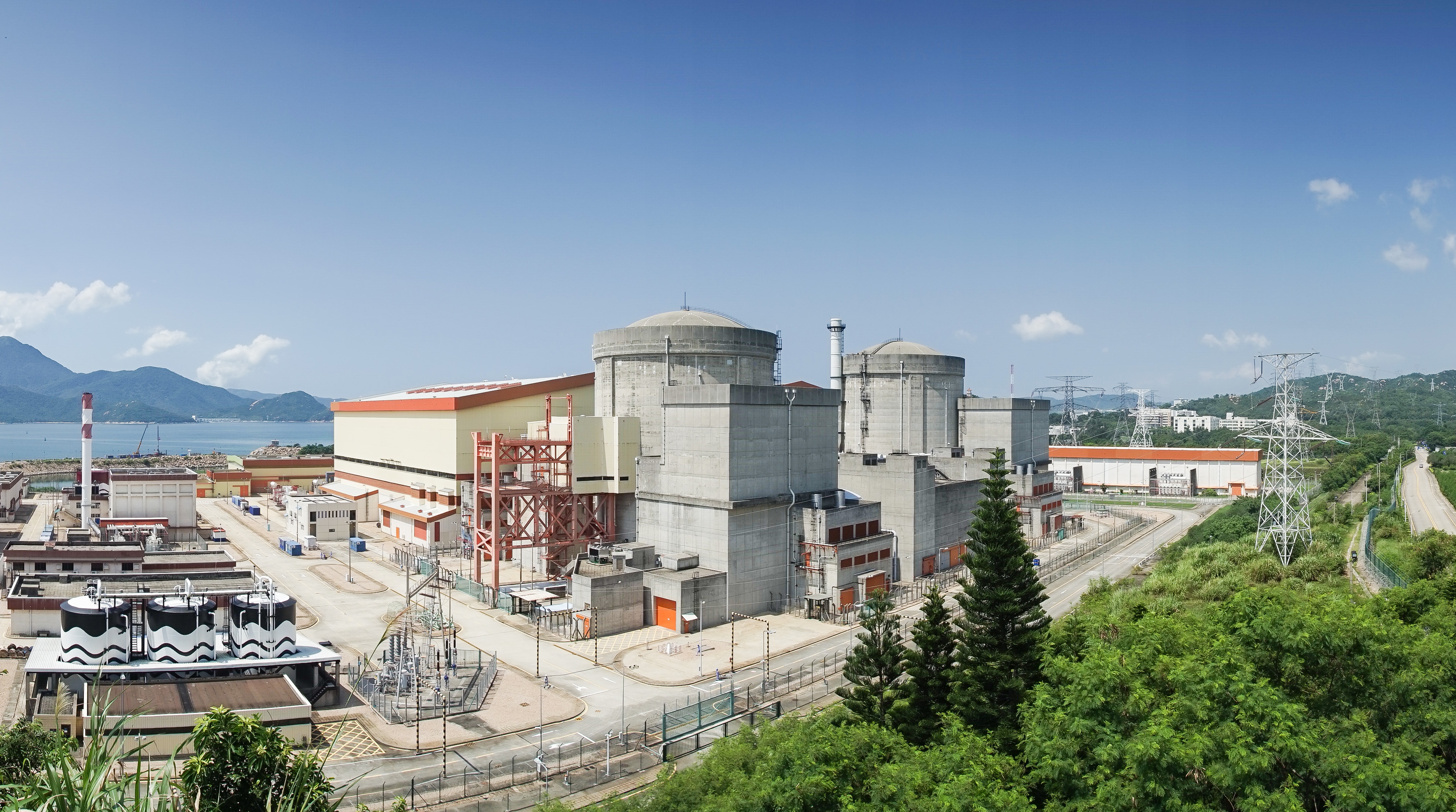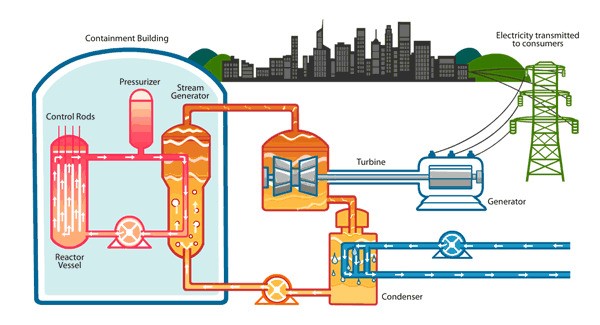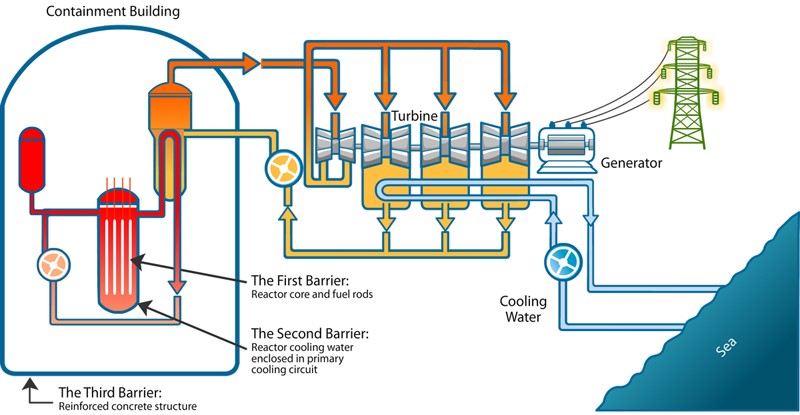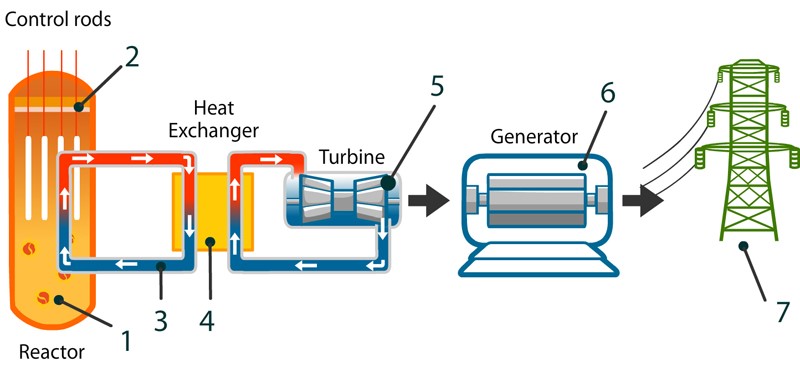Where are the nuclear power stations at Daya Bay and how safe are they?
The Guangdong Nuclear Power Station (GNPS) and the Lingao Nuclear Power Station (LNPS) are located at Daya Bay, Guangdong about 50 kilomters northeast of the urban areas of Hong Kong.
The two power stations have adopted a successful French pressurized water reactor (PWR) design and are operated strictly in accordance with international safety standards. The risk of any serious nuclear accident is extremely small.

Daya Bay Nuclear Stations
| Guangdong Nuclear Power Station (GNPS) | Lingao Nuclear Power Station (LNPS) | |
|---|---|---|
|
Phase 1 |
Phase 2 |
|
|
Owner |
Guangdong Nuclear Power Joint Venture Company Limited (GNPJVC) | 1. Ling Ao Nuclear Power Co. Ltd. (LANPC) 2. Ling Dong Nuclear Power Co. Ltd (LDNPC) |
| Operation, Maintenance & Technical Support | Daya Bay Nuclear Power Operations and Management Co. Ltd. (DNMC) |
Daya Bay Nuclear Power Operations and Management Co. Ltd. (DNMC) |
| Year of Commercial Operation | 1994 | 1. 2002 and 2003 2. 2010 and 2011 |
| Supply of electricity |
80% output to Hong Kong 20% to Guangdong |
100% output to Guangdong |
Multiple Safety Design Features of the Pressurised Water Reactors in Daya Bay
The design of the Pressurised Water Reactors (PWRs) in Daya Bay is based on the French design.
Defence in depth
A defence in depth principle is applied in the design and operation of the nuclear power stations in Daya Bay to ensure nuclear safety. It comprises several levels of multiple protection, including reactor protection systems, engineered safety features, emergency operating procedures, on-site and off-site emergency plans, barriers to prevent release of radioactive materials, etc.
The Three Cooling Circuits
The first cooling circuit is a closed circuit connected to the reactor and confined inside the containment building.
In the second cooling circuit, water is pumped into the steam generator in the containment building where water heated up and converted into steam. The steam then passes to the turbine and turns the generator. Water in the second circuit has no direct contact with the first circuit and it does not mix with the water inside, therefore any traces of radioactivity which may be present in the first circuit will not be transferred to the second circuit.
The third cooling circuit serves to cool down the condenser in the second circuit. Water for the third circuit is supplied from the ocean, sea, lake, river, or a cooling tower.

Three Safety Barriers
The first barrier is the ceramic pellets inside a zirconium alloy cladding, in which the uranium fuel and the fission products are sealed.
The second barrier is formed by a 20-centimetre thick reactor pressure vessel and cooling circuit pipe. The cooling water will be confined in this barrier, even the cooling water in the primary cooling circuit has any traces of radioactivity.
The third barrier is the containment, which is made of a 90-centimetre pre-stressed concrete, lined with a 6 mm leak-tight steel liner. Should there be an escape of radioactive materials from the first cooling circuit, it would be contained in the containment. The containment is able to withstand a pressure up to 5 bars (5 atmospheres) (absolute pressure). Should the pressure be over the limit, the gas in the containment will be discharged through the valves. The gas would exit through the valves to a sand filter which would filter out most of the radioactive material before the gas passes into the atmosphere.

Operation Principal of Pressurised Water Reactor (PWR)

- Uranium fuel loaded into the reactor. In the heart of the reactor (the core), atoms split apart and release heat energy, producing neutrons and splitting other atoms in a chain reaction.
- Control rods are made of materials capable of absorbing neutrons. Control rods can be raised or lowered into the reactor to slow down or speed up the chain reaction. In case of emergency, the control rods will be dropped down by gravity to stop the nuclear reaction.
- In the first cooling circuit, water is pumped through the reactor to collect the heat energy produced in the nuclear reaction..
- Inside the heat exchanger (the steam generator in PWR), the water from the reactor gives up its energy to cooler water flowing in another closed circuit, turning it into steam. As the two circuits of water are unconnected, water in the first circuit, even if contaminated with radioactivity, is safely contained in the first cooling circuit.
- The steam from the heat exchanger (the steam generator in PWR) is piped to drive a turbine.
- The turbine turns an electricity generator which generates electricity.
- The electricity is transmitted to consumers such as households, shops, offices and factories via power grid.

